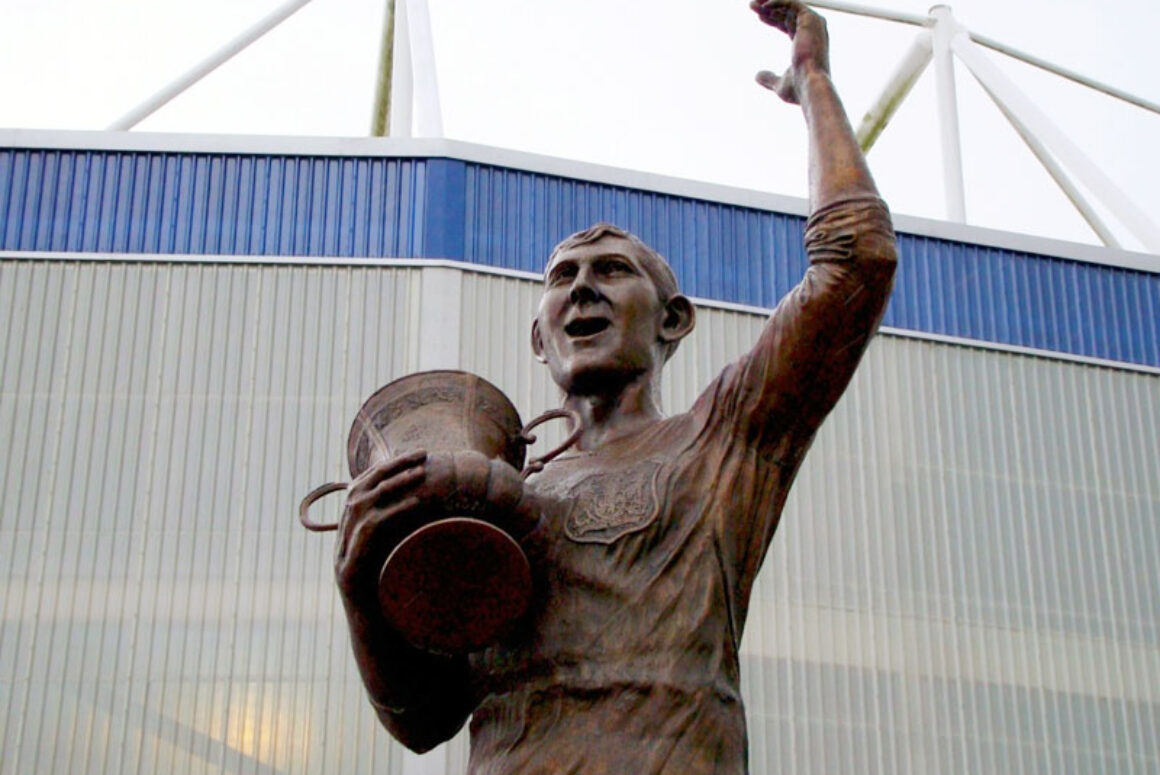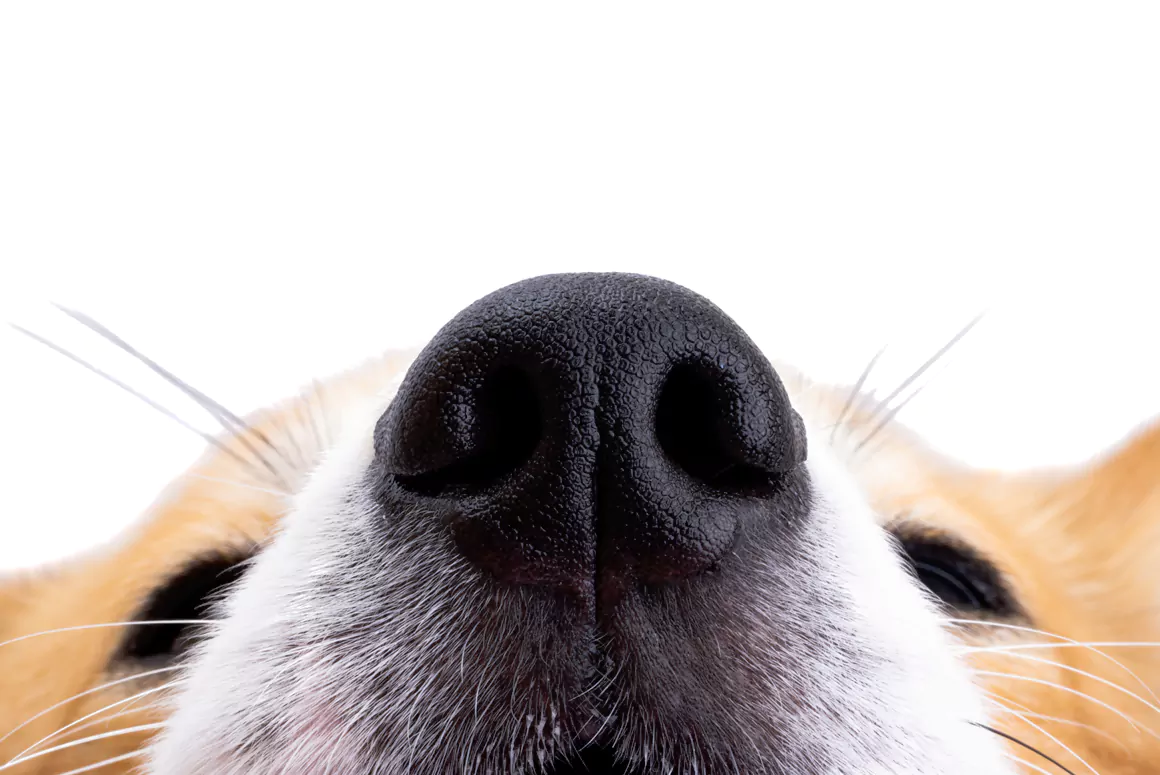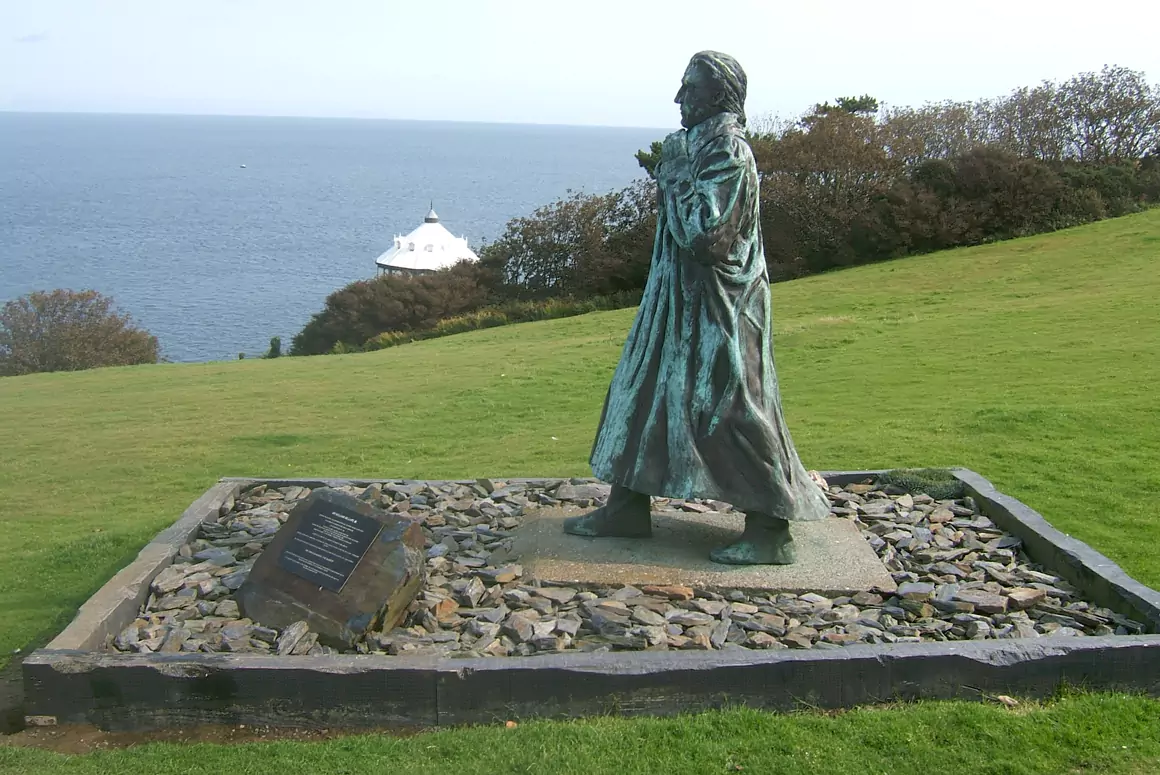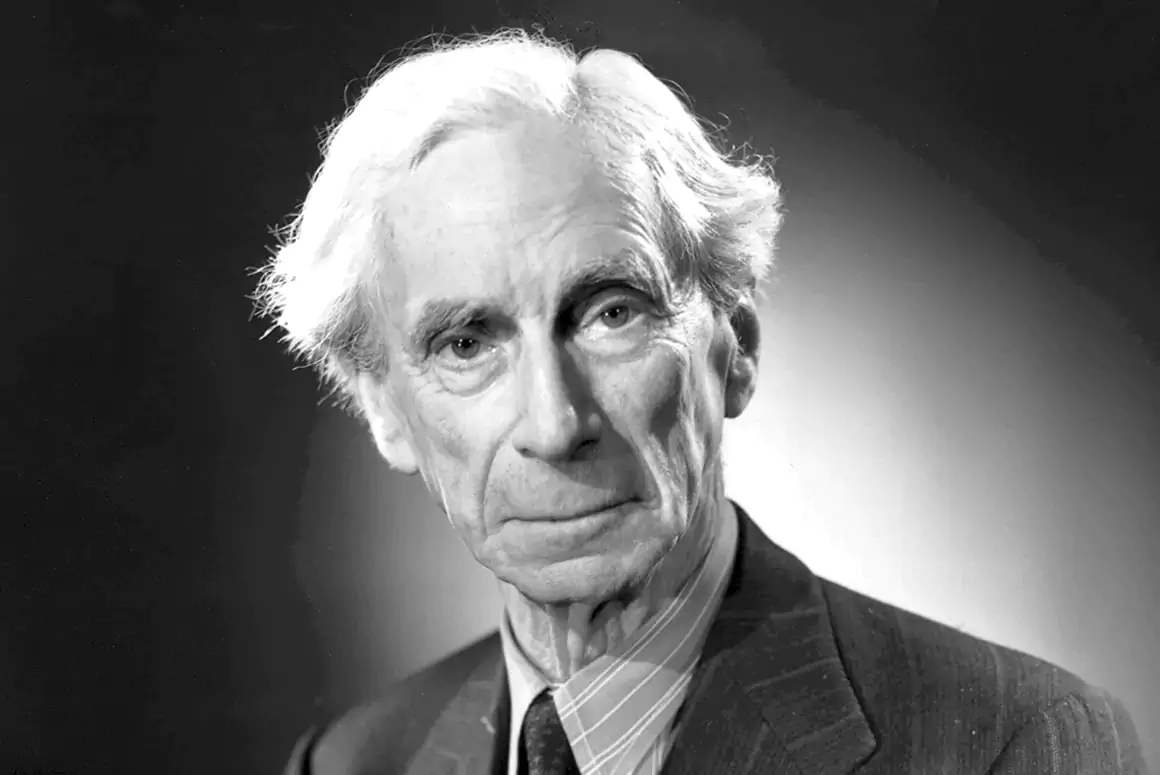![]()
Rugby writer Huw S Thomas reports on the 15 Welsh sportsmen to have had statues erected in their memory
Statues are in the news – and for the wrong reason.
Sadly there is more discussion on their destruction rather than their construction, starting with the pulling down of the statue of Edward Colston in Bristol.
Back in June, an anti-racism demonstration in the city saw the toppling of a statue of the 17th Century merchant and slave trader Colston and ended with its dumping into Bristol Harbour.
Thousands of people attended the demonstration in Bristol, sparked by the death of George Floyd while he was under police arrest in Minneapolis in May 2020.
The Black Lives Matter movement did not avoid Wales and in Cardiff, city councillors voted to remove the statue of slave owner Sir Thomas Picton from City Hall.
Picton was the highest ranking officer to die at the Battle of Waterloo but awareness of his role in the transatlantic slave trade led to the decision to take down the statue.
But mercifully at the same time, there has come out of the city a commitment to honour famous rugby men from Tiger Bay with a three man statue to commemorate the Cardiff Bay Rugby Codebreakers, the likes of Jim Sullivan, Billy Boston Roy Francis.
Rob Cole’s excellent article in The Western Mail on the fame and fortunes of 13 men from Tiger Bay who went to play rugby league in the North of England, brought to mind the statues of great Welsh sportsmen that already exist.
15 great Welshmen have had statues erected in their memory, 13 in Wales and two – that of Billy Boston and Keiron Cunningham – in England.
So who are the famous fifteen – the five boxers, five rugby players, two footballers, one athlete, one water polo player and one outstanding rugby men immortalised in bronze?
They are boxers Jim Driscoll, Eddie Thomas, Howard Winstone, Johnny Owen and David Pearce; rugby players Billy Boston, Ken Jones, Gareth Edwards, Ray Gravell and Keiron Cunningham; Fred Keenor and Ivor Allchurch from the world of soccer; athlete Guto Nyth Brân; Olympic water polo gold medallist Paulo Radmilovic; finishing with the great gentleman of Welsh rugby Sir Tasker Watkins.
Billy Boston and another rugby league Welsh great Gus Risman also feature in a five man statue outside Wembley Stadium alongside Martin Offiah, Eric Ashton and Alex Murphy.
They represent Rugby League’s greatest heroes, and the statue celebrates the sport’s long and historic association with Wembley Stadium.
Wales‘s fascination for boxing goes back to the harsh proletarian society that was the child of the coal industry.
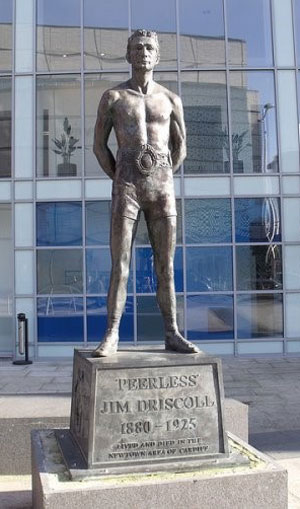
It was boxing, more than rugby, that captured the imagination of the working class at the turn of the 19th century when the heroes of Welsh sport were boxers to a man.
Jim Driscoll, Freddie Welsh, Jimmy Wilde and Percy Jones became household names on both sides of the Atlantic.
Jim Driscoll was brought up in the Newtown area of Cardiff and gained fame as the first ever winner of the coveted Lonsdale Belt and is widely regarded as one of the greatest flyweights of all time.
Boxing lore has it that Peerless Jim had the most perfect straight left in the history of the game.
He had a huge following in Wales and beyond and when he died of consumption on 30 January, 1925, at the age of 44, an estimated 100,000 lined the streets of Cardiff for the funeral, followed by burial at Cathay’s Cemetery. A statue was erected in his honour in Custom House St in 1997.
There was no tougher town to live in than Merthyr and the fact that it the only town in the world to have put up three statues of its boxing sons bares testament to its prowess as a boxing town second to none.
Eddie Thomas, Howard Winstone and Johnny Owen – born and bred in Merthyr – are revered in the town to this day.
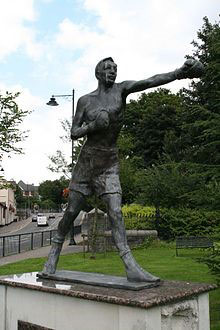
Eddie Thomas, a miner, won British and European welterweight titles in the 1950s before becoming the manager of two future World Champions in Ken Buchanan and Winstone.
He remains one of the legendary figures of Welsh boxing, achieving the difficult feat of finding success both as a boxer himself, and then as a manager, and trainer.
Thomas continued to work in the mines throughout his boxing career and his Thomas’s popularity was helped by the fact that he would sing “Bless This House” at the end of every fight.
His statue is to be found in Bethesda Gardens, Merthyr.
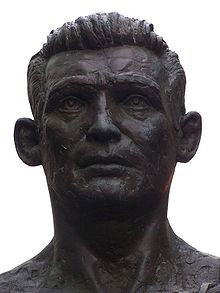
Howard Winstone was Thomas’s pride and joy.
Despite losing the tips of three fingers on his right hand in an industrial accident, Winstone worked on developing one of the fastest and most accurate left hand jab in the game.
He won the WBC World featherweight title in 1968 when he beat Mitsunori Seki after the fight was stopped in the ninth due to a cut eye.
With that win at a packed Albert Hall, he became the first Welsh world boxing champion since Jimmy Wilde in 1923.
His statue can be seen in St Tydfil’s Square, Merthyr.
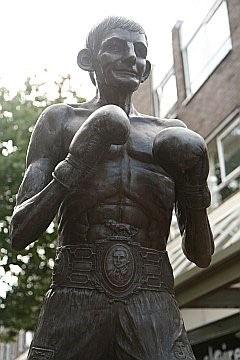
Johnny Owen, The Matchstick Man never won a World title and died in tragic circumstances.
He challenged WBC champion Lupe Pintor for the world bantamweight title on 19 September 1980, losing a brutal difficult contest after twelfth round knockout.
Owen laws carried out of the ring on a stretcher and never regained consciousness. He fell into a coma and died seven weeks later in a Los Angeles hospital at the age of 24.
His statue is also in St Tydfil’s Shopping Centre in Merthyr.
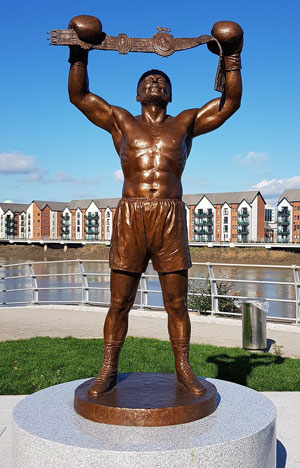
The fifth Welsh boxer to be honoured is British heavyweight champion David ‘Bomber’ Pearce, once tipped to be a future world champion.
His career was blighted by the British Boxing Board of Control’s lack of recognition of the cruiserweight division, meaning that outstanding cruiserweight Pearce was not able to fight for the WBA Cruiserweight title in 1983 despite having signed a contract to do so.
Opinion has it that Pearce would have been unbeatable at cruiserweight, the weight recognised in the USA but not in his own country.
Sadly the BBB of C recognised the division two years later, one year after Pearce’s retirement in 1984 on medical grounds at the age of 24.
The Ring magazine voted the Newport boxer, in the top ten of unluckiest boxers never to win a World title and his statue stands tall at the Riverfront in Newport.
Rugby heroes abound in Wales from Arthur Gould through to Alun-Wyn Jones but there are only three rugby union players to have had statues erected in their honour.
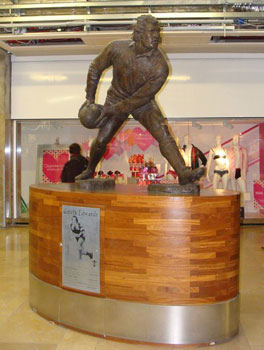
Gareth Edwards is to many one of , if not the greatest player in the history of the game, the youngest player to captain his country, star of Wales, Barbarians and the British Lions in the 1970’s.
He formed with Barry John and then Phil Bennet the most brilliant half back partnerships and is revered wherever the game is played.
He scored what is arguably the greatest try in the history of the game when he finished off the sweeping move that led to the early score in the 1972 Barbarians win over New Zealand.
His statue, shaped in typical passing mode, stands in the middle of Cardiff in the St David’s Shopping Centre.

Ray Gravell of Llanelli, Wales and the Lions was loved by everyone as a passionate Welshman prepared to lay down his life for Wales, on and off the field. His popularity in his homeland was reflected in the aftermath of his untimely death in 2007.
A public funeral was held at a packed to the rafters Stradey Park. Gravell’s flag-draped coffin was carried on to the field by Llanelli players, from past and present, and placed on a red carpet as the ceremony was conducted.
During the ceremony, the scoreboard read ‘Llanelli 9 Seland Newydd 3’, as it did at the end of that famous match which Gravell played in back in 1972.
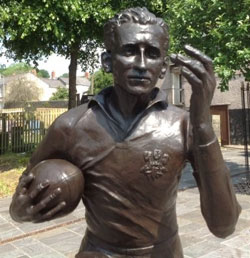
Ken Jones of Newport, Wales and the Lions will forever be remembered as the man who scored the try that beat the 1953 All Blacks.
It is the last time for Wales to beat New Zealand and Baenavon product Jones went on to become the record holder for most Welsh caps in a glittering career ending in 44 appearances.
A tall, well balanced and elegant wing, he was also an international sprinter and good enough to be be a silver medallist at the 4 x 100 metre relay at the 1948 Olympic Games.
Hi statue can be seen in Broad Street, Blaenavon.
Two rugby league players have statues in their honour erected in the places where they made a high impact on the local community.
Billy Boston was the Jonah Lomu of his time such was his explosive power allied to deft footwork but prejudice and racism within Welsh rugby at the time saw him leave Cardiff for Wigan in 1953.
In retrospect, it proved to be a huge loss to the union game in Wales for he would have undoubtedly become one of the stars of the Five Nations internationals of the 1950’s.
At Wigan, he was everybody’s hero scoring a quite remarkable 478 tries in 488 appearances and had a statue raised to him by his admiring public in Believe Square, Wigan.
Boston also feature in a five man statue outside Wembley Stadium alongside Martin Offiah, Gus Risman, Eric Ashton and Alex Murphy.
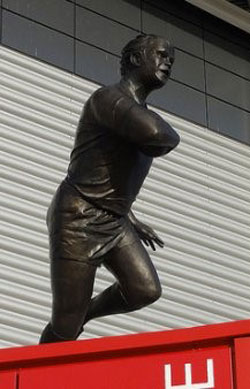
Kieron Cunningham was born and bred in St Helens and qualified for Wales through a paternal grandfather and is considered to be one of the greatest St Helens players of all time.
He shone as a world class hooker for club, Wales and Great Britain, so much so that approaches were made from both Wales and England for him to change codes but he remained loyal to the saints and in July 2007 Rugby League World magazine ranked him as the greatest player of the Super League era.
His statue stands tall at the Totally Wicked Stadium is St Helens.
Two soccer players make our Hall of Fame – Fred Keenor and Ivor Allchurch, one from Cardiff and one form Swansea.
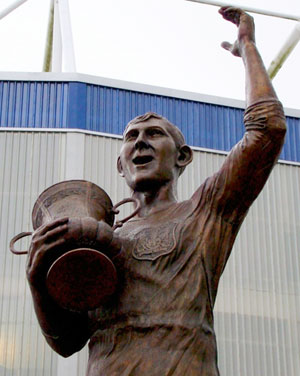
Local boy Fred Keenor was the captain of the Cardiff side which beat Arsenal 1-0 in the final of the 1927 FA Cup which remains to this day the only time that the Cup has been won by a non-English side.
Cardiff had lost 1-0 to Sheffield United in 1925, but under Keenor’s captaincy, they defeated the Gunners under the watching gaze of both Winston Churchill and David Lloyd George.
A rugged, brave and hard tackling centre half, Keenor played over 500 times for the Bluebirds and got capped 32 times for Wales – a remarkable feat in itself as he had been severely injured at the Battle of the Somme in 1916.
His statue stands outside the Cardiff City Stadium.
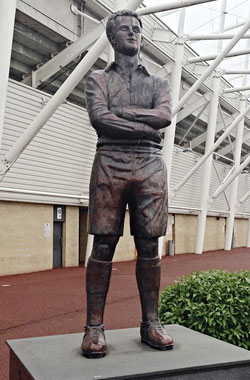
Swansea born and bred, Ivor Allchurch was The Golden Boy of Welsh Football in the 1950s and gave his best days to the Swans – then in the Second Division – despite being courted by all the best clubs in English football.
With his wavy blond hair, elegant and sinuous movement and powerhouse shooting, he was the darling of The Vetch before eventually moving to First Division Newcastle United.
He won 68 caps and was the inspiration behind Wales getting to the quarter finals of the 1958 World Cup in Sweden, before losing to Brazil 1-0 to a goal by Pelé.
He is still worshipped by Swansea fans to this very day as the club’s greatest footballer and nicest of men.
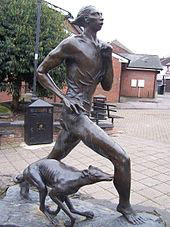
The athlete Griffith Morgan may mean nothing to followers of the sport but his better known name Guto Nyth Brân will ring instant bells of recognition.
Guto was a legendary 18th century middle/long distance runner who is now remembered each year on New Year’s Eve by the Nos Galan race in Mountain Ash.
The 5 kilometre race is a memorial to Guto and run over the course of Guto’s first competitive race and attracts runners from far and wide.
Each year a mystery runner competes and in 2008 Olympic Gold medallist Linford Christie carried the Nos Galan torch through the streets of the town midst crowd of over 10,000 people.
Guto’s statue stands tall in Oxford Street, Mountain Ash.
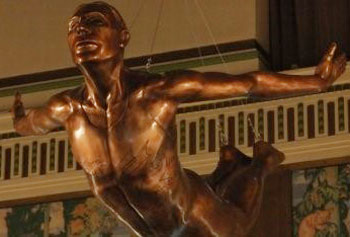
Few have heard of Paulo Radmilovic but the swimmer and water polo player – born in Tiger bay – won four Olympic gold medals across three successive Olympics, making him one of the greatest Olympians of all time.
Three golds at water polo (1908, 1912 and 1920) were supplemented by a gold in the 4 x 200 metre relay (1908).
In the 1920 water polo final in Antwerp it was Radmilovic who scored the winning goal to beat Belgium 3-2.
In 1928 Raddy was the first person to compete for Great Britain at five Olympic Games., a record that he held until 1976.
His statue can be seen at the Swansea Leisure Centre.

Last of our heroic Welshmen is Sir Tasker Watkins VC, a former president of The Welsh Rugby Union (1993-2004).
After gaining the Victoria Cross in Normandy in August 1944, Sir Tasker had a long and distinguished legal career, became a Privy Councillor, then the WRU President in 1993.
As the wisest of administrators, he oversaw the switch from the amateur era of rugby to professionalism and the change from club to regional rugby in Wales.
His obituary in The Guardian read…
His appointment had been as a kind of referee, a man who could be trusted by the disparate, sometimes back-biting, WRU factions. He was a good choice; a safe pair of hands, he oversaw the change in the game from amateur to professional – something he regretted – and chaired a committee in which he proposed a far-sighted overhaul of the body. When he stepped down, a new post of honorary life vice-president was created for him.
His statue can be seen at the entrance to the Principality Stadium.
The reverence and affection that all 15 are held in through Wales can be encapsulated in an extract from Phil Mellings’ biography of Billy Boston “Heart and Soul” (1998).
“In 1966 a joy rider hit Billy Boston outside his home in Poolstock. Billy suffered serious leg injuries. Sentencing the young offender, the magistrate placed him under a curfew order.’ I’m doing this for your own good,’ he said. ‘There are people out there who are very unhappy with what you’ve done. If there’s one person you don’t knock down in Wigan, it’s Mr Boston.’
Billy who was inundated with flowers and get well cards, was in hospital for a few weeks. The car was a write off.”
Wales can be proud of the men whose fame will last in bronze but it also raises the question of how many of our great sportsmen have been forgotten.
Why no statues of Lyn Davies, Billy Meredith, or Bleddyn Williams, who no Tanni Grey-Thompson, Ian Woosnam or Carwyn James, why no Joe Calzagie, Cliff Morgan or Jimmy Wilde – and why no John Charles?


